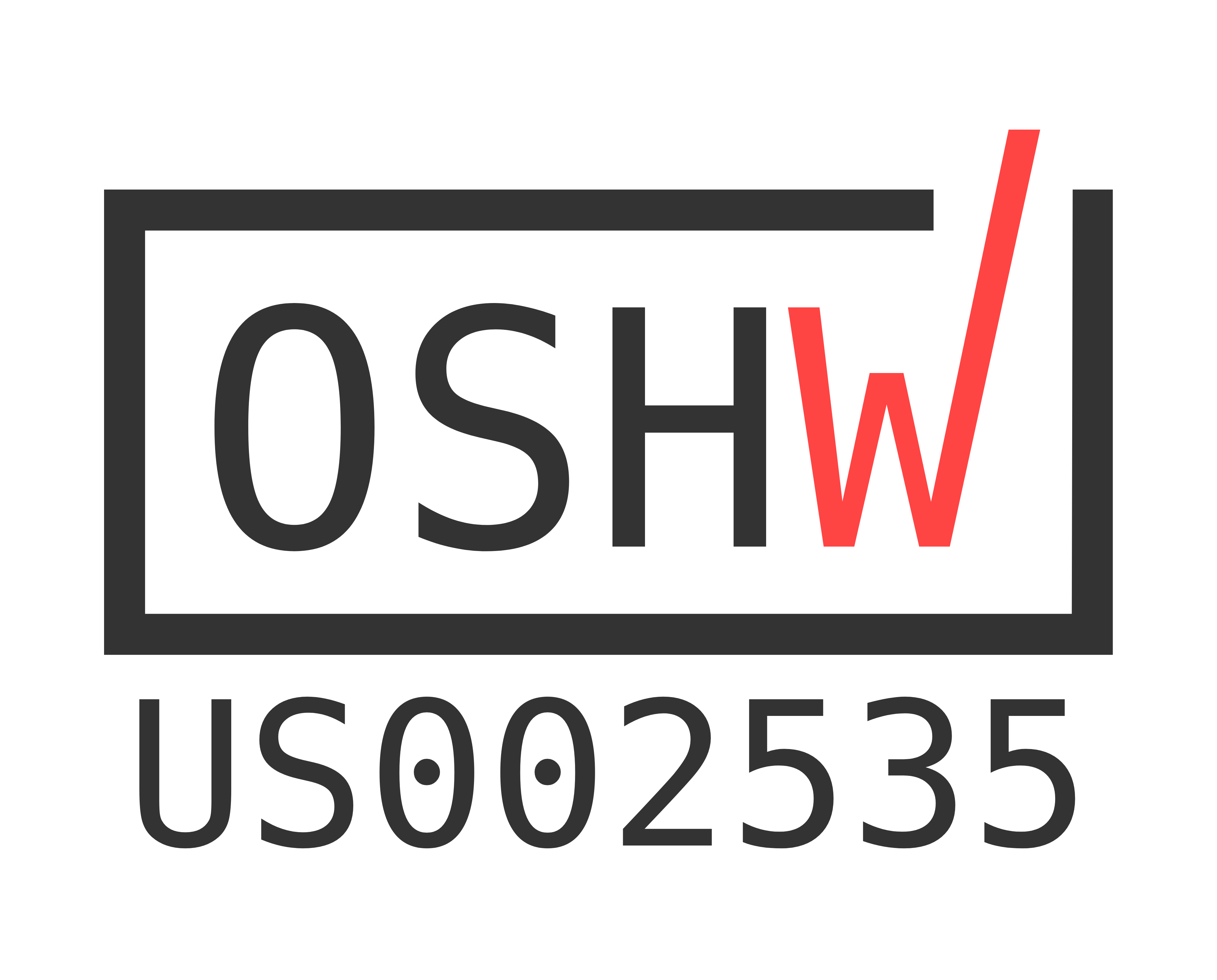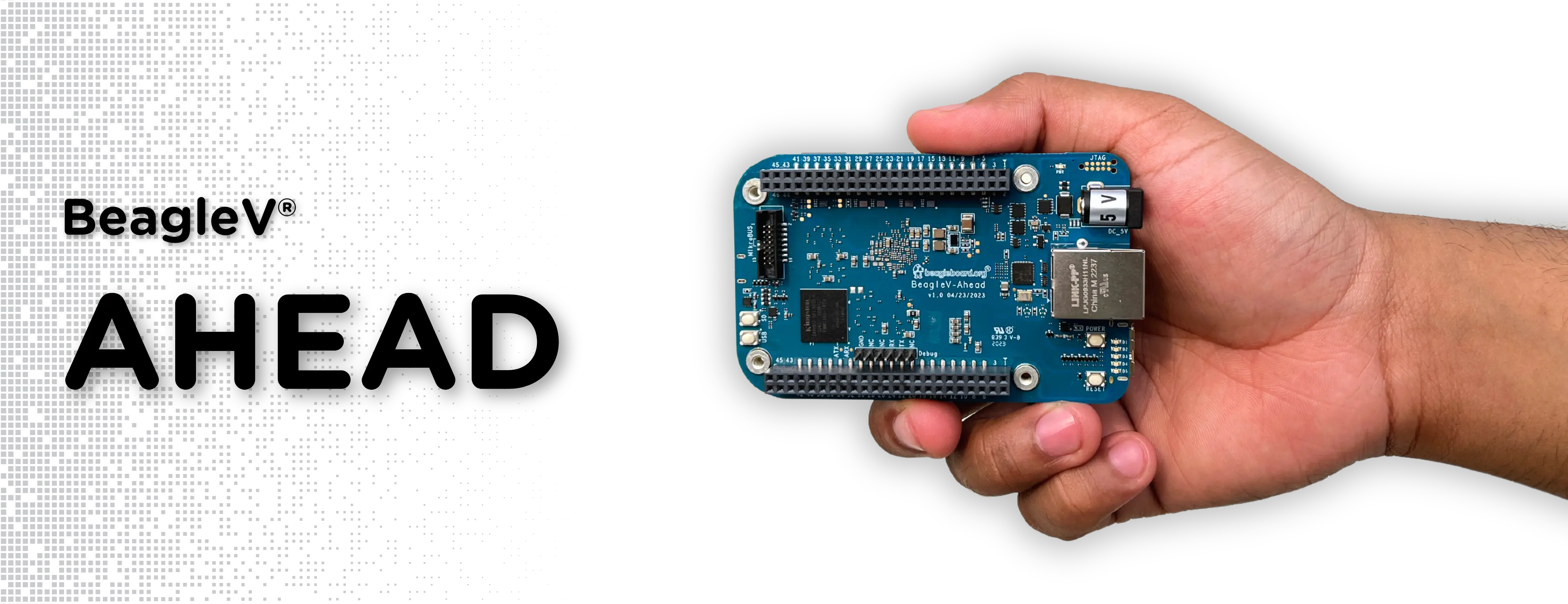
- Terms and conditions: https://docs.beagleboard.org/latest/boards/terms-and-conditions.html
- Documentation: https://docs.beagleboard.org/latest/boards/beaglev/ahead
- Design: https://git.beagleboard.org/beaglev-ahead/beaglev-ahead
- Support: https://forum.beagleboard.org/tags/c/beaglev/15/ahead
- Repair: https://www.beagleboard.org/rma
- Purchase: https://beaglev-ahead.org
- T-Head TH1520 AI system-on-chip processor
- Quad-core XuanTie C910 open-source RTL RISC-V (RV64GCV ISA) CPU @ 2GHz
- 3 issue, 8 instruction, 9-12 stage pipeline
- In-order fetch, out-of-order launch, out-of-order completion and in-order retirement
- 64KB I-cache, 64KB D-cache per core
- AI NPU with 4TOPS INT8 @ 1GHz
- Support for TensorFlow, ONNX, Caffe
- Feature extraction accelerator
- Image signal processor
- H.264/H.265/JPEG video encoder and decoder
- 2D accelerator
- 3D Vulkan/OpenCL/OpenGLES accelerator (IMG?)
- C906-based (RV64IMA[FD]C[V] ISA) audio processor subsystem
- Quad-core XuanTie C910 open-source RTL RISC-V (RV64GCV ISA) CPU @ 2GHz
- 4GB LPDDR4
- 16GB eMMC
- New Beagle form-factor open-source development board
2xSuperSpeed-USB type-A host (stacked)- SuperSpeed USB type-C dual-role with power input (no power output)
- Consider adding USB-to-serial/JTAG for the type-C device and move USB to host-only
- Gigabit Ethernet with speed/connection indicators
- HDMI type-A connector
- TBD SDIO WiFi
- uSD card cage
- 2xCSI ribbon cable connectors
- 1xDSI ribbon cable connector
- 2x46-pin expansion headers with 4-pin HS-USB extension
- 2x8-pin "mikroBus shuttle" ribbon-cable connector for audio and sensors
- 3-pin TTL-level debug UART connector
- Fan power connector (fan is optional)
- 6x LEDs (1 power, 5 programmable)
- 3x push-buttons (power, reset, boot/user)
- 5V barrel jack
- BeagleBoard.org Debian Linux image
- Tracking mainline u-boot/kernel with T-Head patches as needed
- Package feeds for custom binaries for TensorFlow Lite, etc.
- Familiar and flexible graphical user interface environment
- Self-hosted Visual Studio Code IDE via web-browser
- USB-based virtual network for "single-cable development"
- Documentation needs to start
- Reference schematic and PCB source files
- Reference for DDR
- Reference for PMIC and power design
- Additional SoC details (Chinese language is good) - pointers to licensed IP is fine
- Power consumption
- Clear legal path to usage
- Verify the IP in the SoC is licensed for use
- Verify the IP user documentation can be public
- Signed 3P agreement
- Supplier part commitment
- 10k parts for launch
50k units per yearfixed price and availability 5 years as long as 10k units per year
- SDK source required to test board
- Review Linux device tree
- Reference schematic and PCB source files
- Documentation needs to launch
- Additional SoC details (Chinese language is good) - pointers to licensed IP is fine
- Overview of SoC Memory Map
- Boot process
- Clocking and reset
- Interrupts map or List
- PLIC (Platform Level Interrupt Controller)
- CLINT (Core-Local Interruptor)
- L2 Cache Controller
- DMA Controller
- DDR interface
- UART peripheral (including register map)
- PWM peripheral (including register map)
- I2C controller (including register map)
- SPI controller (including register map)
- GPIO controller (including register map)
- Gigabit Ethernet MAC (including register map)
- USB controller (including register map)
- SDK source
- Open source Linux kernel with reasonable SoC entitlement (or register-level detailed IP documentation)
- V4L2 driver for video encoder/decoder
- IMG 3D open source Mesa/Vulkan driver
- libcamera and V4L2 driver for ISP and CSI video interace for common sensors (IMX219-based Pi camera)
- DRM driver for the 2D image accelerator, display processing unit and DSI video interface
- ALSA driver for audio interface
- Additional SoC details (Chinese language is good) - pointers to licensed IP is fine
